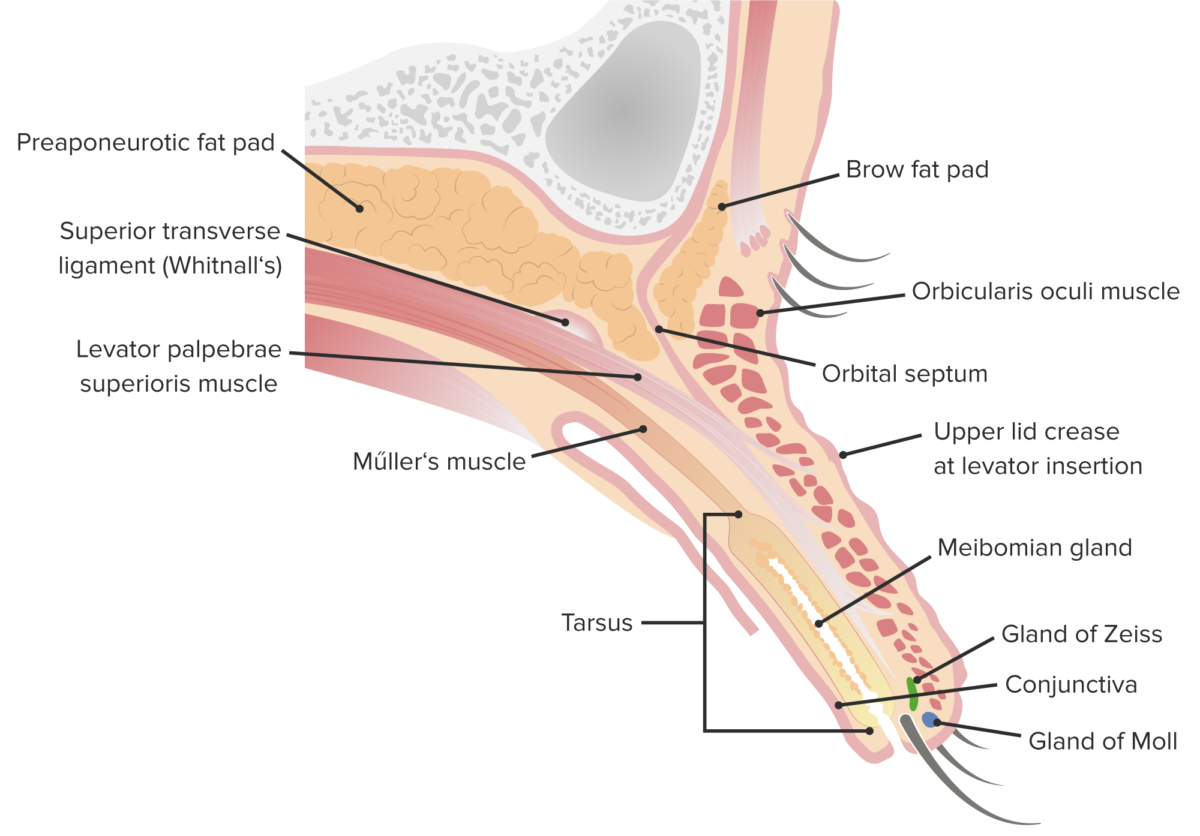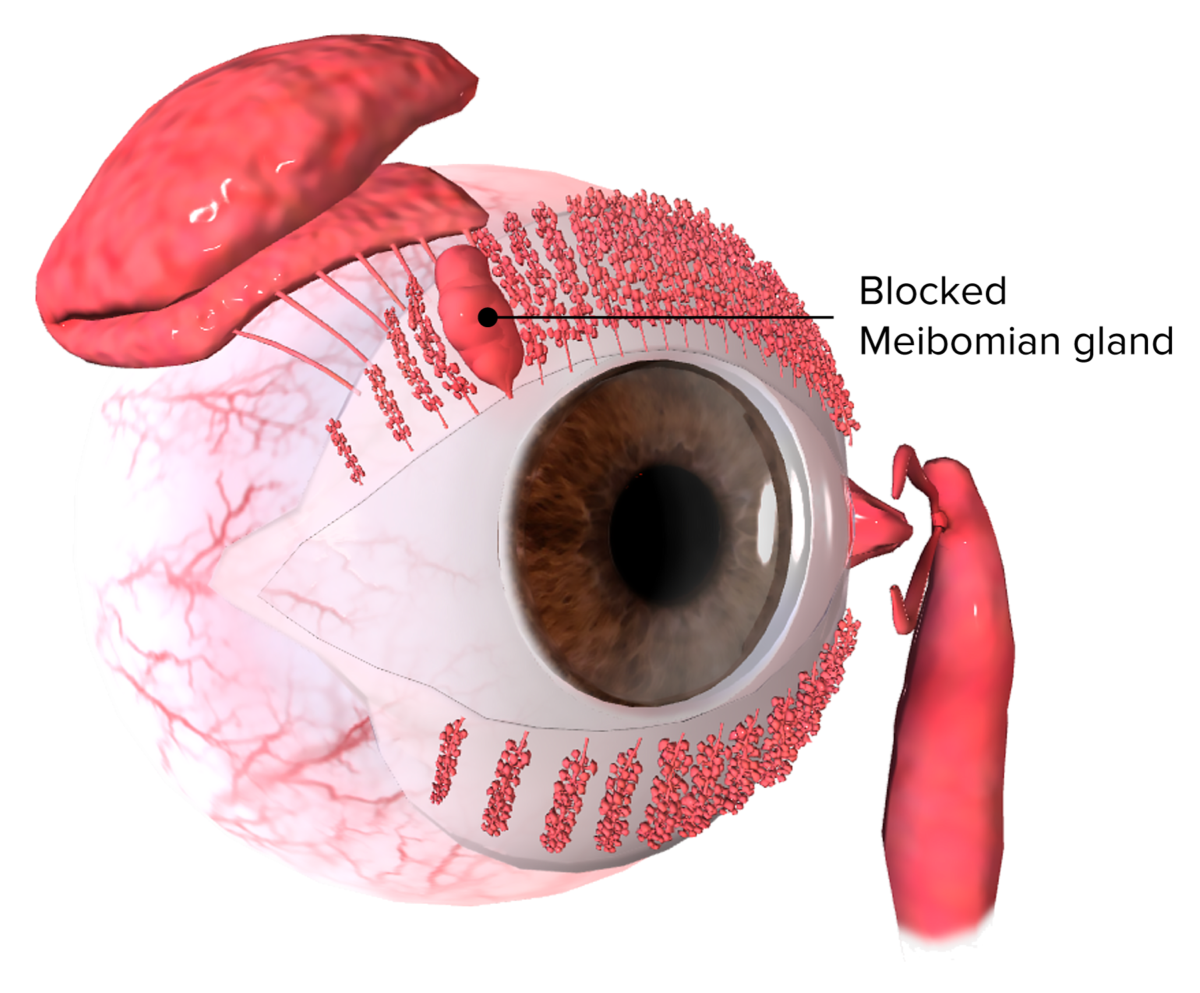A chalazion is one of the most common inflammatory lesions of the eyelid. It is caused by obstruction of the meibomian or Zeis glands, leading to granulomatous inflammation Inflammation Inflammation is a complex set of responses to infection and injury involving leukocytes as the principal cellular mediators in the body's defense against pathogenic organisms. Inflammation is also seen as a response to tissue injury in the process of wound healing. The 5 cardinal signs of inflammation are pain, heat, redness, swelling, and loss of function. Inflammation and resulting in a firm, rubbery, slow-growing nodule that is typically non-tender. Diagnosis is based on history and physical exam findings. Most chalazia will resolve with conservative management.
Last updated: May 17, 2024
Occurs due to gland blockage, which can be associated with:

Anatomy of the eyelid: Note the locations of the Meibomian and Zeis glands, which are typically involved in the formation of a chalazion.
Image by Lecturio.
Visualization of a blocked Meibomian gland causing a chalazion
Image by BioDigital, edited by Lecturio
Patient presenting with a chalazion on the left eyelid with mild swelling
Image: “Chalazion” by jd. License: Public DomainDiagnosis is clinical based on the history and physical exam.